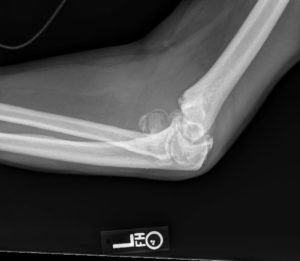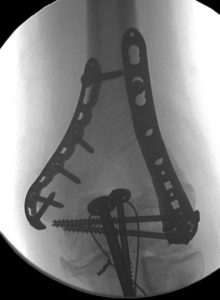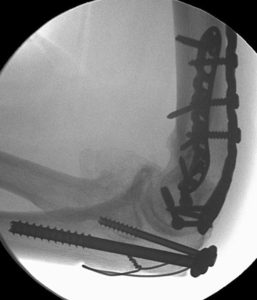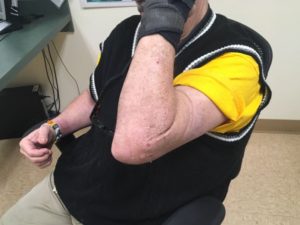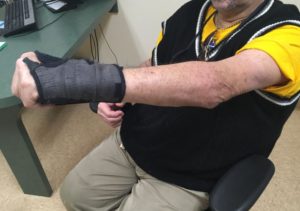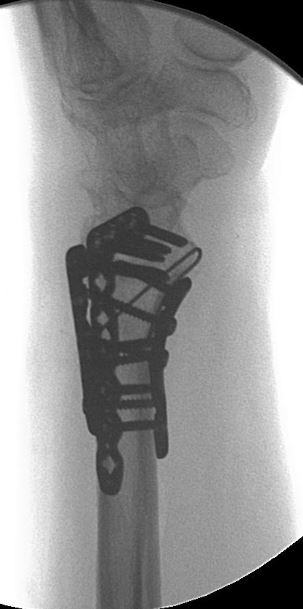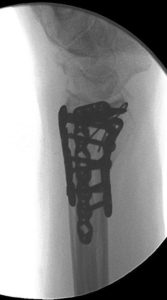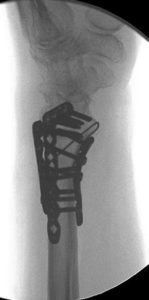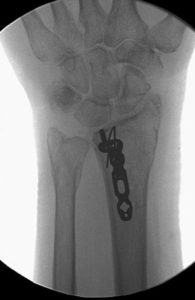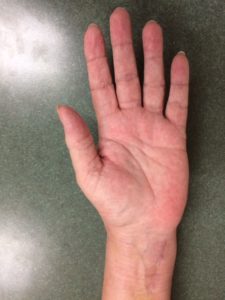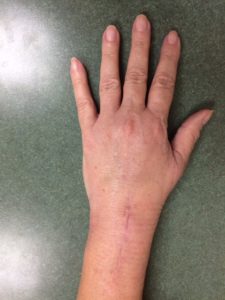History: 60 year-old male who injured his left elbow while riding his bicycle. He went to the hospital where he was diagnosed with a severe fracture of the elbow that included the joint surface. He he also had some arthritis in the elbow prior to his fall but it was not very bothersome to him.
Diagnosis: Left complex distal humerus fracture
Treatment: Left elbow open reduction internal fixation through an olecranon osteotomy
Outcome: His recovery was very smooth. Within a few weeks he was already using his arms for crutches and working on his range of motion. By 4 months after surgery he had near full motion with no pain. After 6 months he was fully healed. The incision was nearly invisible.



